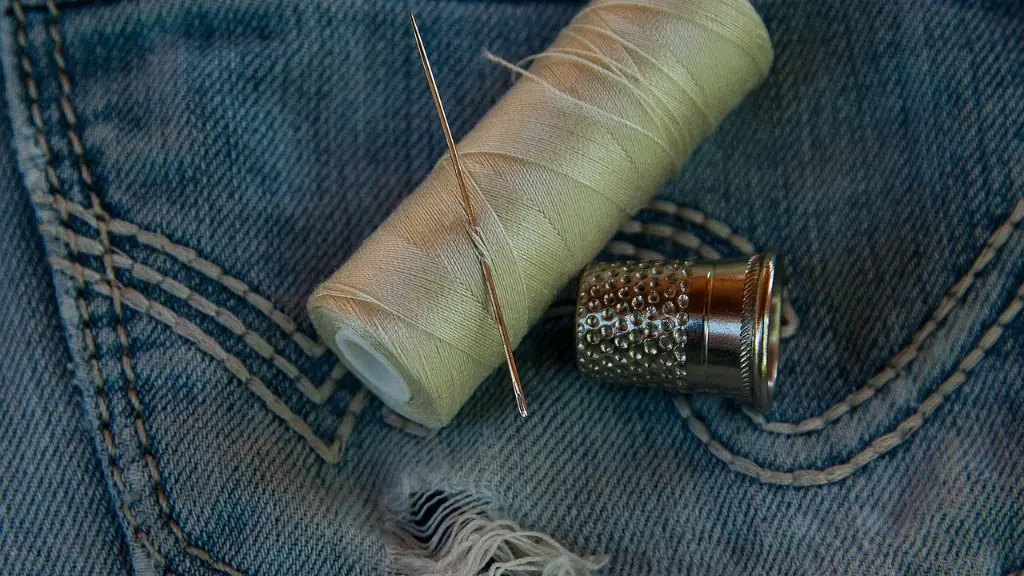Basics
Threading a sewing machine is an important part of learning how to sew. Threading a sewing machine can be a daunting task for someone who has never done it before. However, with a little bit of time and patience, anyone can learn to thread a sewing machine.
When threading a sewing machine, the first step is to understand what type of sewing machine it is. Different sewing machines have different threading instructions. It is important to refer to the instruction manual that comes with the machine in order to ensure that the threading process is done properly.
The next step is to identify the threads that are needed. Generally, two types of threads are needed to thread a sewing machine: the bobbin thread and the top thread. The bobbin thread is the thread that goes through the bobbin, while the top thread is the thread that goes through the needle and upper portion of the sewing machine.
Once the threads are identified and ready to go, the user needs to ensure that the bobbin case is correctly inserted into the machine. The bobbin case should be inserted in such a way that the thread from the bobbin is wrapped around the tension disc. Once this is done, the thread can be inserted into the take-up lever and needle.
The last step is to draw up the bobbin thread and make sure that the thread from the bobbin is tensioned correctly. This can be done by turning the hand wheel and making sure that both the bobbin and the needle thread have tension. Once this is done, the sewing machine is ready for use.
Troubleshooting
The most common problem when threading a sewing machine is the tension being incorrect. This can be caused by incorrect threading, incorrect tension in the bobbin case, or an incorrectly adjusted tension disc. The first step to troubleshooting this issue is to consult the owner’s manual that came with the machine.
If the tension appears to be incorrect, the user should check each threading point and make sure that each thread is tensioned properly. If the problem persists, the tension disc can be adjusted.
In some cases, the tension may be too high or too low for the thread. The user should check the thread tension and make sure that it is adjusted to the correct tension. This may require replacing the existing thread or adjusting the tension disc.
Tips
Threading a sewing machine correctly can help to ensure that the stitching is even and will increase the life of the machine. There are a few tricks and tips that can help get the most out of threading a sewing machine.
The most important tip when threading a sewing machine is to not pull the thread too tightly when threading it through the machine. This can cause knots to form in the thread, which can cause jams and other problems while sewing.
Another tip is to ensure that the bobbin is correctly inserted into the machine. It is important that the bobbin is inserted in the same direction as the thread is being drawn up.
Finally, if the tension appears to be incorrect, the user should check the threading points once again. This can help to ensure that the thread is tensioned properly.
Thread Types
When threading a sewing machine, it is important to consider what type of thread to use. Different types of thread have different properties and should be chosen based on the project in mind.
One type of thread is cotton thread, which is suitable for general purpose sewing. Cotton thread is easy to thread and is strong and durable. Another type of thread is polyester thread, which is also suitable for general purpose sewing projects. Polyester thread is strong, but is slightly more difficult to thread than cotton thread.
Finally, nylon thread is another type of thread that is suitable for general purpose sewing. Nylon thread is strong and durable, but can be difficult to thread due to its slickness.
Precautions
Prior to threading the sewing machine, it is important to take a few precautions to ensure that the threading process goes smoothly. The first precaution is to make sure that the needle is correctly inserted into the machine before threading. This will help to ensure that the thread is correctly tensioned.
If the sewing machine has been used recently, the user should make sure that the machine is turned off before threading. This will help to prevent the needle from being damaged while threading the machine.
Finally, the user should be careful not to pull the thread too tightly when threading the sewing machine. This can cause the thread to break or jam the machine.
Benefits
Threading a sewing machine correctly can help to ensure that the project turns out correctly and will help to increase the life of the sewing machine. Properly threaded sewing machines can provide a consistent stitch and visually appealing projects.
Threading a sewing machine correctly can also help to reduce thread jams and other problems. Properly tensioned threads will help to keep the machine running smoothly and reduce the need for repairs. A correctly threaded sewing machine will help to reduce the time spent troubleshooting and will maximize the user’s time spent actually sewing.
Finally, threading a sewing machine correctly can help to save money over time. Well-threaded machines are less likely to require repairs or replacements, which can save the user money in the long run.
Conclusion
Threading a sewing machine can seem daunting, but with a little bit of patience and practice, anyone can learn how to do it. Different types of threads should be chosen based on the project in mind, and it is important to take a few precautions before threading the machine. Understanding the basics of threading a sewing machine will help to ensure that the project turns out correctly and will help to save time and money in the long run.





